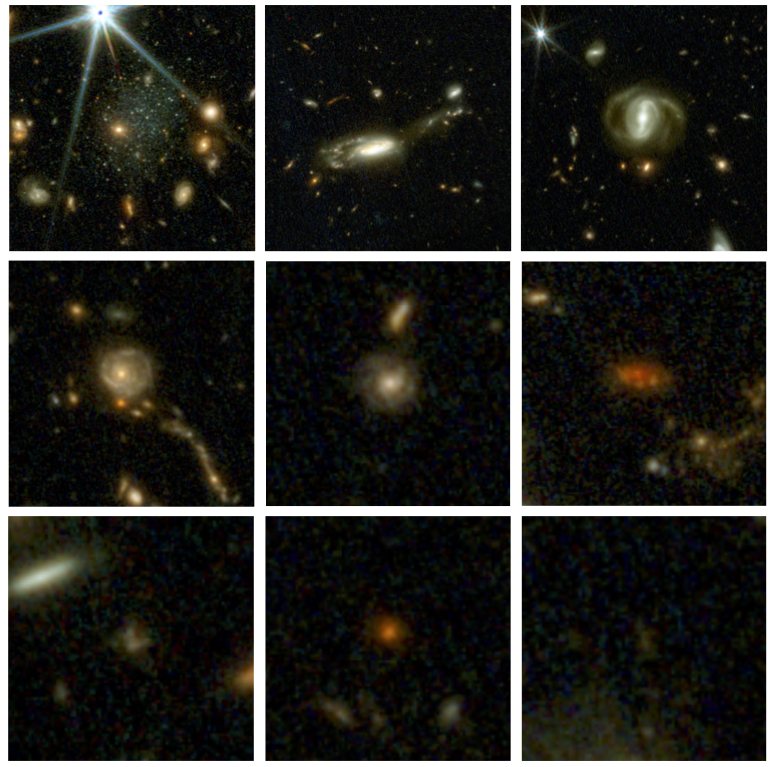The discovery of a fossil blue-stain fungus colonizing the insect-infested conifer wood Xenoxylon phyllocladoides in China’s Jurassic Tiaojishan Formation extends the earliest fossil record of blue-stain fungi by approximately 80 million years, reshaping the timeline of evolution of this fungal group, and provides new insights into the evolution of their ecological associations with wood-boring insects.
Blue-stain fungus in wood tissues of Xenoxylon phyllocladoides from the Jurassic of western Liaoning province, China. Image credit: Tian et al., doi: 10.1093/nsr/nwaf160.
Blue-stain fungi constitute a distinctive group of wood-colonizing fungi which lack the ability to decompose wood lignocellulose, yet are capable of causing significant sapwood discoloration, particularly in coniferous trees.
Though these fungi are generally non-fatal to their hosts, they often accelerate tree mortality when associated with wood-boring insects.
Molecular phylogenetic analyses suggest that blue-stain fungi should be an old fungal group, which might originate during the Late Paleozoic or Early Mesozoic.
However, hardly anything is known about the geological occurrences of blue-stain fungi.
“Not until 2022, the first credible fossil record of blue-stain fungi was reported from the Cretaceous in South Africa with an age of approximately 80 million years,” said Dr. Ning Tian, a paleontologist at Shenyang Normal University.
Dr. Tian and colleagues found well-preserved fossil fungal hyphae preserved within 160-million-year-old petrified wood of Xenoxylon phyllocladoides from the Tiaojishan Formation in northeastern China.
“Microscopic examination reveals the fossil hyphae are dark in color, which is indicative of pigmentation, a hallmark of contemporary blue-stain fungi which results in the discoloration of woods,” they said.
“Of interest, when penetrating the wood cell wall, the hyphae commonly form a very specialized structure called penetration peg.”
“That is to say when pushing through the wood’s cell walls, the hyphae commonly slim down in size, making it easier to pierce through the tough barrier.”
“The discovery of the penetration peg enabled us to ensure that the fossil fungus that we found belongs to the blue-stain fungal group.”
“Unlike wood-decay fungi, which degrade wood cell walls through enzymatic secretion, the blue-stain fungi lack the enzymatic capacity to decompose wood structures.”
“Instead, their hyphae mechanically breach wood cell walls via the penetration pegs.”
“The finding of Jurassic blue-stain fungi from China, represents the second report of the blue-stain fungi and the earliest fossil record of this fungal group in the world, pushes back the earliest known fossil record of this fungal group by approximately 80 million years, providing crucial fossil evidence for further understanding the origin and early evolution of blue-stain fungi,” said Dr. Yongdong Wang, a paleontologist at Nanjing Institute of Geology and Palaenology.
“Additionally, it offers fresh insights into understanding the ecological relationships between the blue-stain fungi, plants, and insects during the Jurassic period.”
“The bark beetle subfamily Scolytinae is considered as one of the major spore dispersal agents for extant blue-stain.”
“However, both molecular biological and fossil evidence proposed that the origin time of Scolytinae dates back no earlier than the Early Cretaceous.”
“Given the Jurassic age of present fossil fungus, it is hypothesized that its spore dispersal vector was not Scolytinae but rather other wood-colonizing insects prevalent during that period.”
The discovery is reported in a paper published in the June 2025 issue of the journal National Science Review.
_____
Ning Tian et al. 2025. Blue-stain fungus from the Jurassic provides new insights into early evolution and ecological interactions. National Science Review 12 (6): nwaf160; doi: 10.1093/nsr/nwaf160

























